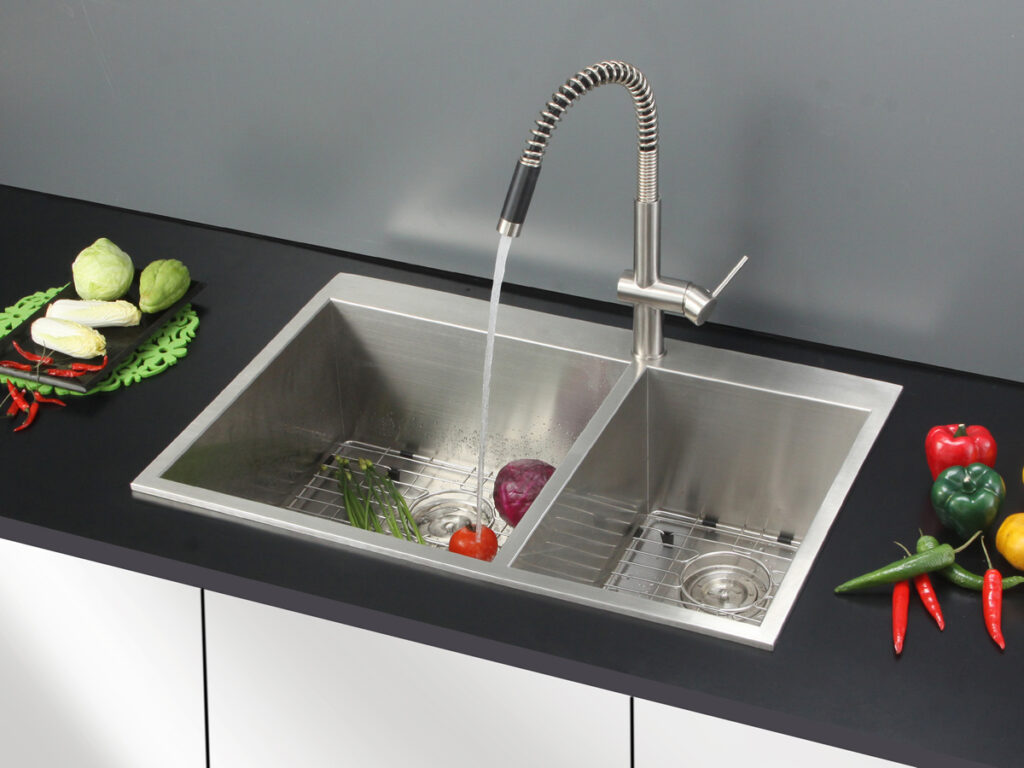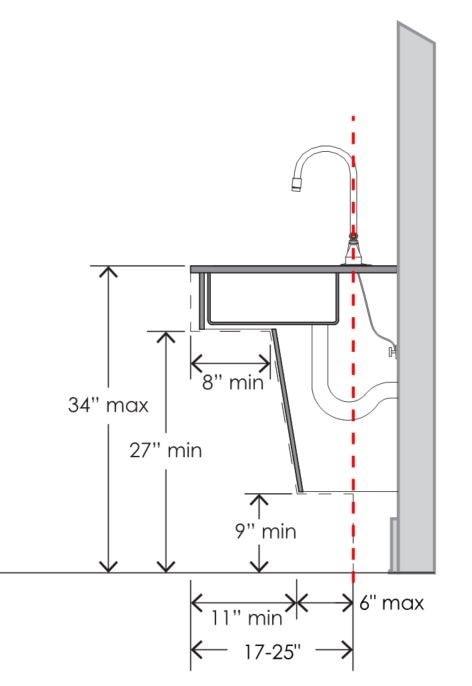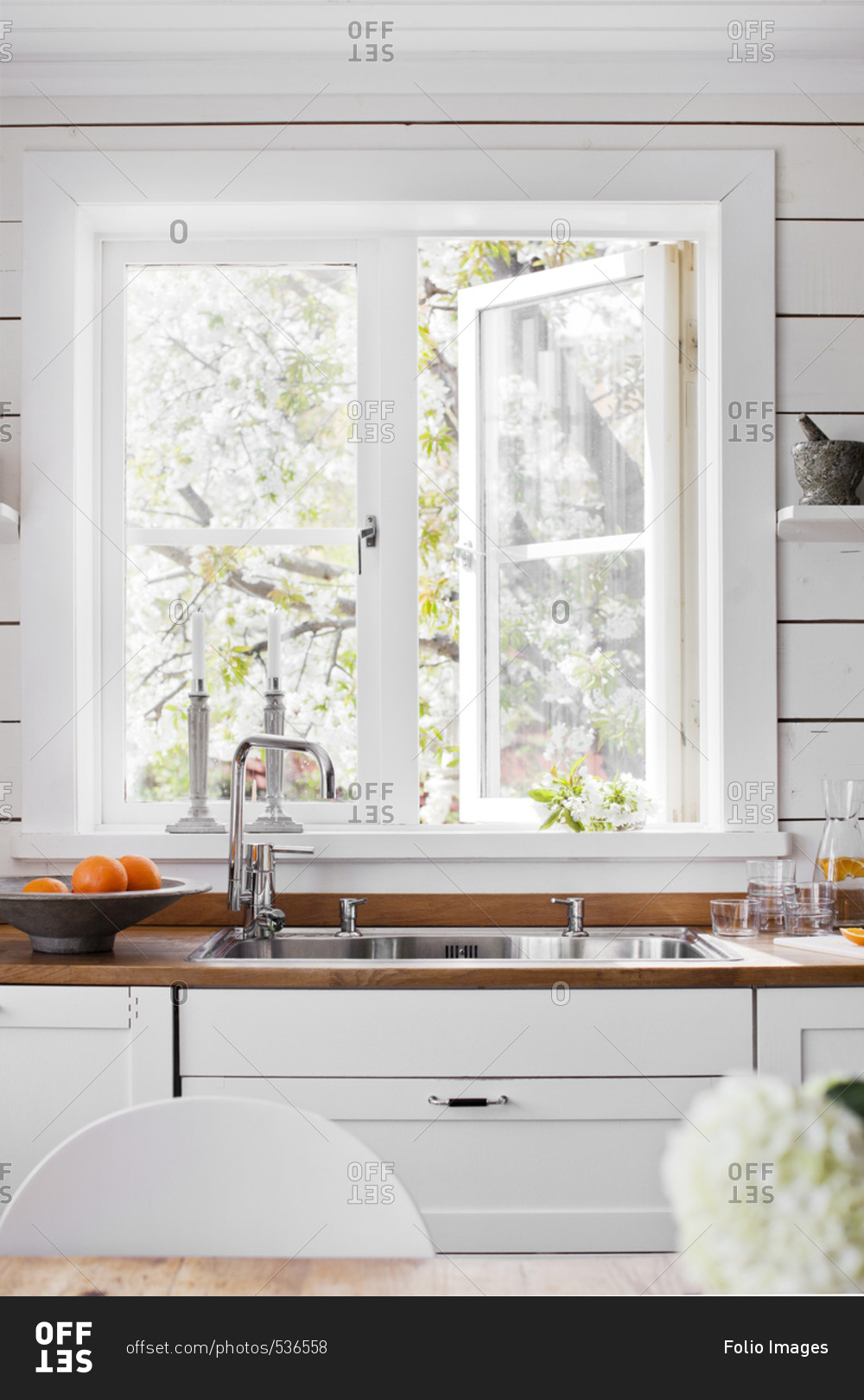The kitchen is the heart of any home and having the right sink can make all the difference. For those with limited mobility or disabilities, an ADA offset kitchen sink can provide the necessary accessibility and functionality. But like any product, there are pros and cons to consider before making a purchase. In this article, we will explore the top 10 pros and cons of ADA offset kitchen sinks to help you make an informed decision.Introduction
An ADA offset kitchen sink is a type of sink that is designed to meet the requirements set by the Americans with Disabilities Act (ADA). This means that it is accessible and usable for individuals with disabilities or limited mobility. The main feature of an ADA offset kitchen sink is the offset design, which allows for easier wheelchair access and more countertop space.What is an ADA Offset Kitchen Sink?
Let's take a closer look at the pros and cons of ADA offset kitchen sinks.Pros and Cons of ADA Offset Kitchen Sink
Ease of Use: The main advantage of an ADA offset kitchen sink is its ease of use for individuals with disabilities or limited mobility. The offset design allows for easy wheelchair access, making daily tasks in the kitchen much more manageable. More Counter Space: With the sink being offset to one side, there is more counter space available on the other side. This can be beneficial for those who need extra space for food preparation or other tasks. Improved Accessibility: ADA offset kitchen sinks are designed to be accessible for individuals with disabilities, making it easier and safer for them to use the sink. This can also benefit those who may have temporary injuries or mobility limitations. Variety of Designs: There are many different designs and styles of ADA offset kitchen sinks available, allowing you to choose one that fits your kitchen's aesthetic and your personal preferences. ADA Compliant: As mentioned before, these sinks are designed to meet the requirements set by the ADA. This means that they are compliant with accessibility standards and regulations.Pros:
Cost: ADA offset kitchen sinks tend to be more expensive than traditional sinks due to their specialized design and features. This can be a disadvantage for those on a tight budget. Installation: Installing an ADA offset kitchen sink may require professional help, which can add to the overall cost. It may also be more challenging to install due to its offset design. Maintenance: The offset design may make it more challenging to clean and maintain the sink, especially in hard-to-reach areas. Less Storage Space: The offset design of the sink may take up more space underneath the counter, resulting in less storage space for kitchen essentials. Limited Options: While there are many designs available, the options for ADA offset kitchen sinks are still relatively limited compared to traditional sinks.Cons:
When looking for an ADA offset kitchen sink, it is essential to consider the different options available. Some sinks may have different features or designs that may better suit your needs and preferences. Here are some factors to consider when comparing options: Size: Make sure to measure your existing countertop space to ensure that the sink will fit properly. Design: As mentioned before, there are various designs and styles available, so choose one that best fits your kitchen's aesthetic. Material: ADA offset kitchen sinks can be made from different materials such as stainless steel, porcelain, or granite. Consider which material would be most durable and suitable for your needs. Installation: Some sinks may require professional installation, while others may be easier to install yourself. Consider the cost and effort involved in installation. Cost: As mentioned before, these sinks can be more expensive, so consider your budget when comparing options.Comparison of ADA Offset Kitchen Sink Options
Here are some of the main benefits of an ADA offset kitchen sink: Improved Accessibility: As we mentioned before, these sinks are designed to be accessible for individuals with disabilities or limited mobility, making daily tasks in the kitchen much more manageable. Increased Counter Space: The offset design of the sink allows for more counter space, which can be beneficial for food preparation and other tasks. Enhanced Safety: The accessibility and functionality of an ADA offset kitchen sink can also improve safety in the kitchen, reducing the risk of accidents and injuries. Compliance with Regulations: If you are renovating or building a new kitchen, an ADA offset kitchen sink can help ensure that your space is compliant with accessibility regulations.Benefits of ADA Offset Kitchen Sink
Here are some of the main disadvantages of an ADA offset kitchen sink: Higher Cost: As mentioned before, these sinks can be more expensive than traditional sinks, making them less budget-friendly. Installation Challenges: Due to the offset design, installation may be more challenging and may require professional help. Maintenance Difficulties: The offset design may make it more challenging to clean and maintain the sink, especially in hard-to-reach areas.Disadvantages of ADA Offset Kitchen Sink
An ADA offset kitchen sink can provide many benefits for those with disabilities or limited mobility. However, there are also some drawbacks to consider before making a purchase. By weighing the pros and cons and considering your specific needs and preferences, you can find the perfect ADA offset kitchen sink for your home. Remember to also compare different options and choose one that fits your budget and aesthetic. With the right ADA offset kitchen sink, you can make your daily kitchen tasks more accessible and enjoyable.Conclusion
Pros and Cons of ADA Offset Kitchen Sinks

Pros:
 One of the main advantages of an ADA offset kitchen sink is its accessibility feature. These sinks are designed to be lower and more shallow, making it easier for individuals with disabilities or limited mobility to reach and use the sink. This can be a great addition to any household, as it promotes inclusivity and makes daily tasks more manageable for those with physical limitations.
In addition to its accessibility benefits, an ADA offset kitchen sink also offers a unique and modern look to any kitchen. The offset design allows for more counter space on one side of the sink, making it easier to prep and wash dishes. It also creates a sleek and stylish appearance, which can elevate the overall design of your kitchen.
Another advantage of an ADA offset kitchen sink is its versatility. These sinks come in a variety of sizes, shapes, and materials, making it easier to find the perfect fit for your kitchen. They can also be installed in different ways, such as top-mount or undermount, giving you more options for customization.
One of the main advantages of an ADA offset kitchen sink is its accessibility feature. These sinks are designed to be lower and more shallow, making it easier for individuals with disabilities or limited mobility to reach and use the sink. This can be a great addition to any household, as it promotes inclusivity and makes daily tasks more manageable for those with physical limitations.
In addition to its accessibility benefits, an ADA offset kitchen sink also offers a unique and modern look to any kitchen. The offset design allows for more counter space on one side of the sink, making it easier to prep and wash dishes. It also creates a sleek and stylish appearance, which can elevate the overall design of your kitchen.
Another advantage of an ADA offset kitchen sink is its versatility. These sinks come in a variety of sizes, shapes, and materials, making it easier to find the perfect fit for your kitchen. They can also be installed in different ways, such as top-mount or undermount, giving you more options for customization.
Cons:
 While ADA offset kitchen sinks have many benefits, there are also some drawbacks to consider. One of the main concerns is the potential for water splashing out of the shallow sink. This can be a nuisance and may require you to be more careful when using the sink to avoid making a mess.
Another disadvantage of an ADA offset kitchen sink is the limited space on one side of the sink. While the increased counter space can be beneficial, it also means less room for larger items like pots and pans. This may be a problem for those who do a lot of cooking or have a large family.
Lastly, ADA offset kitchen sinks may be more expensive than traditional sinks. The added features and customization options can drive up the cost, making it a less budget-friendly option. However, if accessibility and modern design are important to you, the benefits may outweigh the cost.
Conclusion:
In conclusion, ADA offset kitchen sinks have both pros and cons to consider. They offer accessibility, a modern appearance, and versatility, but also come with potential drawbacks such as splashing and limited space. Before making a decision, it's important to carefully weigh these factors and determine if an ADA offset sink is the right choice for your kitchen.
While ADA offset kitchen sinks have many benefits, there are also some drawbacks to consider. One of the main concerns is the potential for water splashing out of the shallow sink. This can be a nuisance and may require you to be more careful when using the sink to avoid making a mess.
Another disadvantage of an ADA offset kitchen sink is the limited space on one side of the sink. While the increased counter space can be beneficial, it also means less room for larger items like pots and pans. This may be a problem for those who do a lot of cooking or have a large family.
Lastly, ADA offset kitchen sinks may be more expensive than traditional sinks. The added features and customization options can drive up the cost, making it a less budget-friendly option. However, if accessibility and modern design are important to you, the benefits may outweigh the cost.
Conclusion:
In conclusion, ADA offset kitchen sinks have both pros and cons to consider. They offer accessibility, a modern appearance, and versatility, but also come with potential drawbacks such as splashing and limited space. Before making a decision, it's important to carefully weigh these factors and determine if an ADA offset sink is the right choice for your kitchen.









:max_bytes(150000):strip_icc()/basic-kitchen-sink-types-1821207-hero-54418ed30f9540a9aa6148a1394f33a6.jpg)


































:max_bytes(150000):strip_icc()/GettyImages-174841379-5a85d100ba61770036d9f06c.jpg)
































